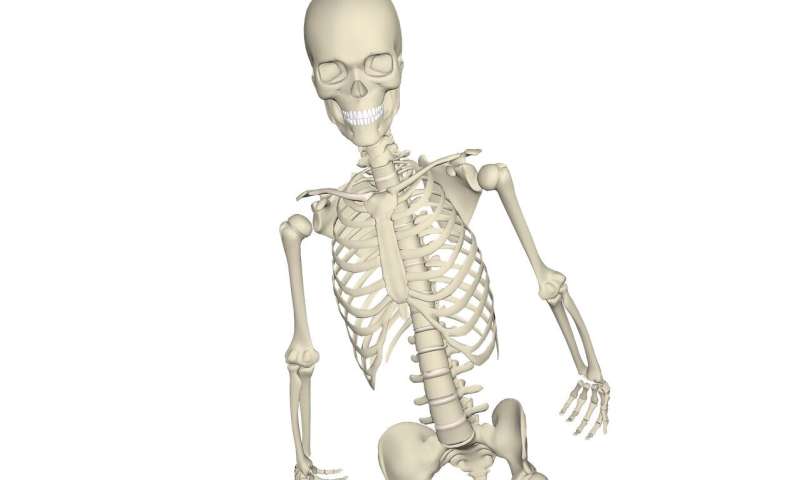
A multidisciplinary team of researchers at McMaster University has discovered a structural feature of human bone that has never been studied before under a microscope, bringing scientists closer to advancing bone implants and treatments for bone diseases.
Using a plasma focused ion beam microscope at the Canadian Center for Electron Microscopy (CCEM) – the first and only microscope of its kind found in a Canadian university—the team found that bone mineral can form in clusters in addition to forming within or around collagen fibrils.
This is the first time human bone has been studied using a plasma focused ion beam microscope, says Dakota Binkley, a Ph.D. candidate in the School of Biomedical Engineering at McMaster and co-author of the research paper published in the Journal of Structural Biology.
“We were able to see ellipsoidal 3-D clusters of bone mineral that look like tiny footballs—these clusters have been thought of to exist in bone, but never visualized until our work,” says Binkley, who is pursuing a joint degree with the Doctoral School of Physics at the University of Grenoble Alpes in France with co-author Aurélien Gourrier.

“Knowing the structure and mechanisms of deposition in healthy bone is essential for us to understand changes in diseased bone, like osteoporosis, which affects millions of Canadians. It’s also key so we can design implant materials which accurately mimics bone’s natural form to promote bone regeneration,” Binkley adds.
To create high-resolution 3-D images of bone samples, the plasma focused ion beam microscope captures “slices” of the bone, then puts the pieces together using an algorithm to form a full model.
The instrument can probe a length scale called the mesoscale—in between the micrometer and millimeter scale—to create 3-D images of large volumes with nanometer resolution.
“What we’re seeing is that there’s more levels of hierarchy in bone than we imagined,” says Kathryn Grandfield, co-author and an associate professor of materials science and engineering and the School of Biomedical Engineering.
https://youtube.com/watch?v=4cmN4n4y2A8%3Fcolor%3Dwhite
“We know that, on the scale visible to our eyes, bone has a solid core outside and spongy interior, but now we’re seeing that there’s other length scales that matter.”
Typically, when similar techniques are used to image bone, researchers take all the mineral components out of the bone first.
The team at McMaster found optimal conditions to visualize bone with the entire bone intact, allowing them to investigate the bone’s full structure, according to Binkley.
Along with Binkley and Grandfield, other Canadian researchers and industry working in a broad range of fields are able to take advantage of the CCEM’s world-class electron microscopy capabilities and expertise.
Grandfield and Nabil Bassim, the CCEM’s scientific director and an associate professor of materials science and engineering, were awarded the plasma focused ion beam microscope by the Canada Foundation for Innovation (CFI) in 2018.
“Even though bone has been studied for decades, I’m excited to see that we’re still able to find something new. Just by having a new technology, we can still make discoveries,” says Grandfield. “That drives me to keep developing microscopy tools and techniques—there are still structures out there that we haven’t seen before because we haven’t used the right tool.”
The multidisciplinary team involved in this research includes the CCEM, biomedical engineers, materials engineers, physicists and health scientists. Bone samples were prepared at the Electron Microscopy Facility in the Faculty of Health Sciences. Joseph Deering, in materials science and engineering, and Hui Yuan of the CCEM, also co-authored the research paper.
“We wouldn’t be able to do this work if we didn’t have all those different viewpoints,” adds Grandfield.
Source: Read Full Article






